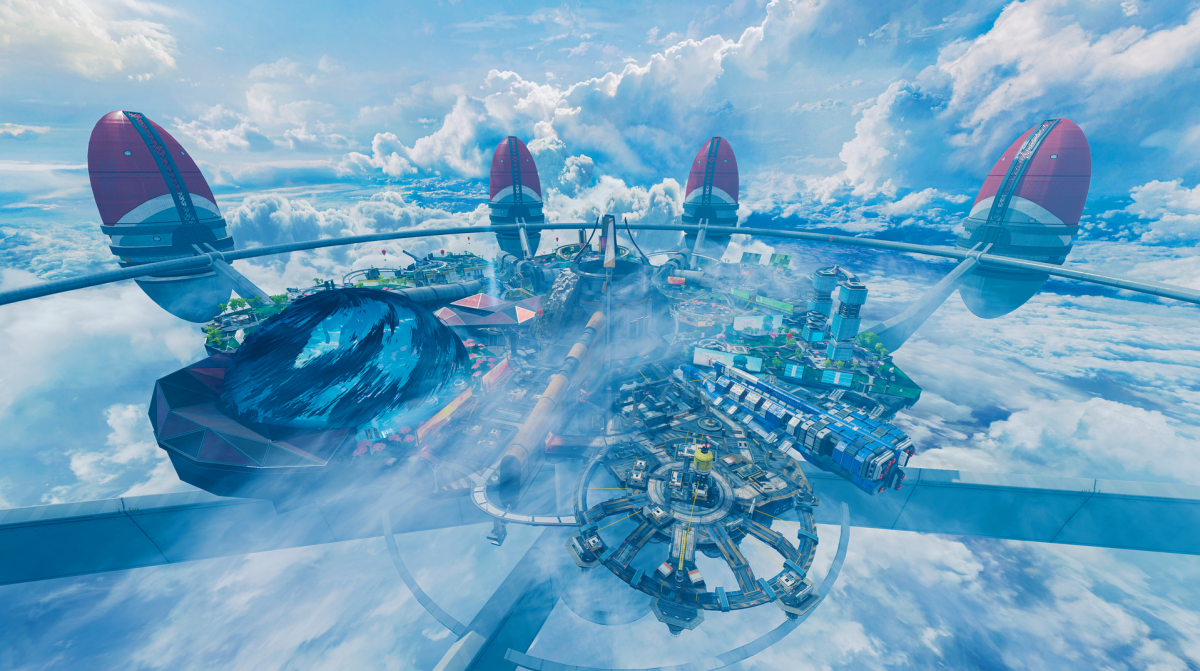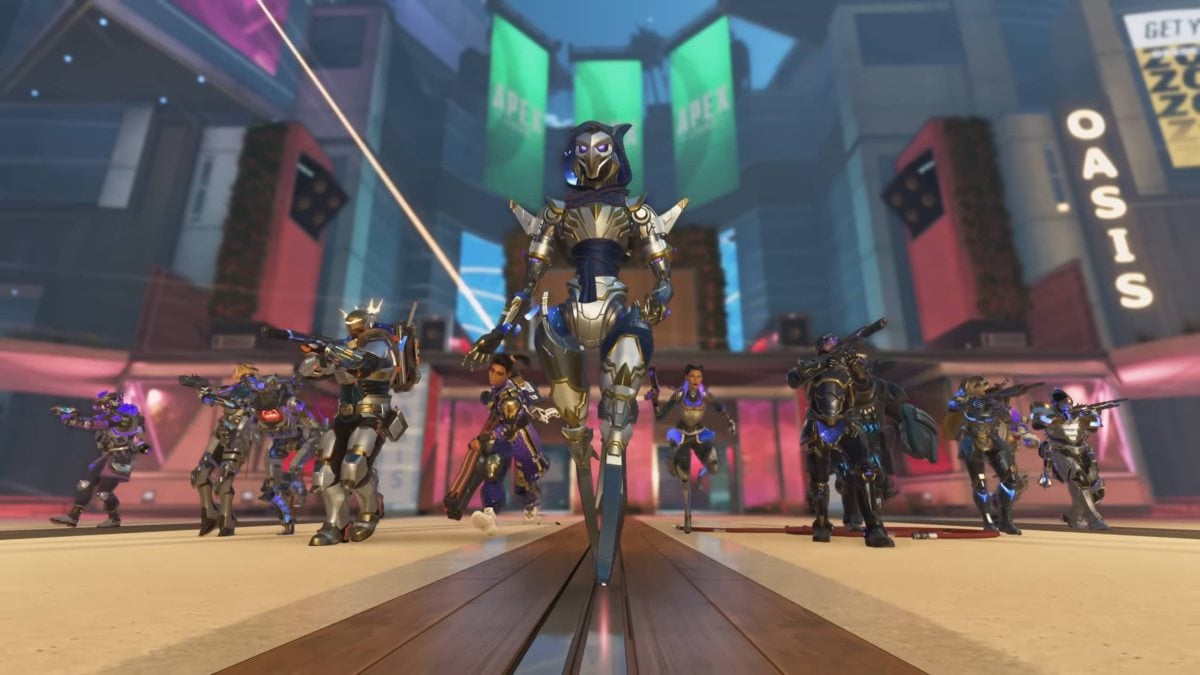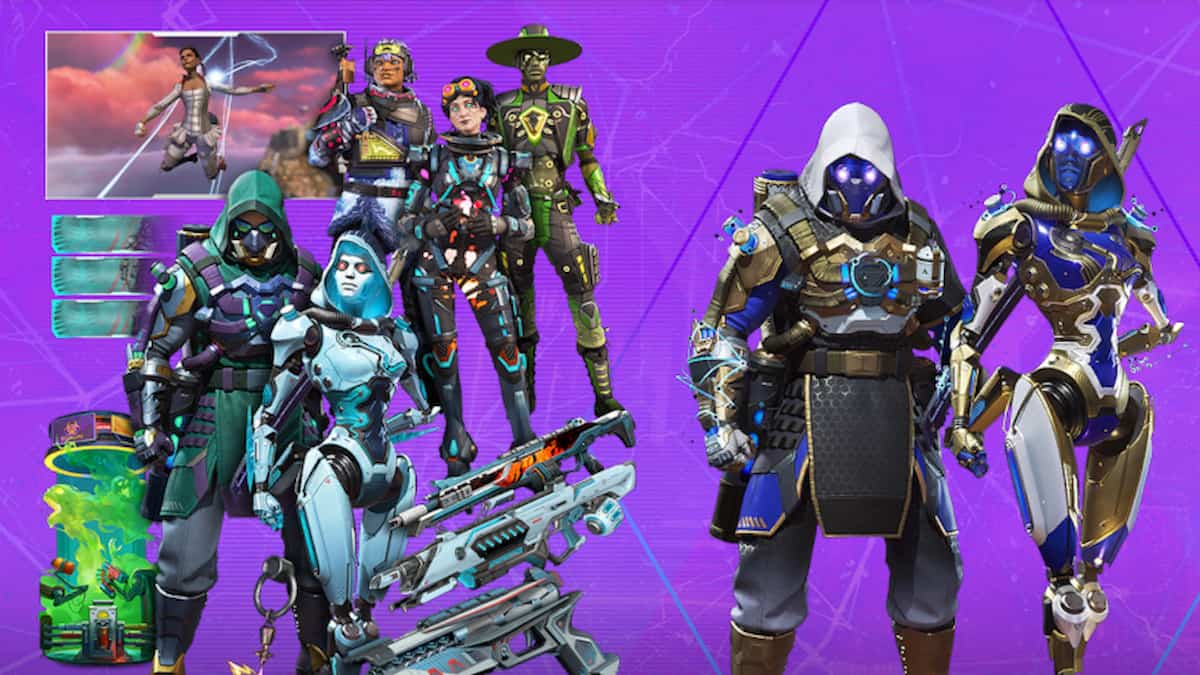Olympus, Apex Legends’ new map, is a floating city in the clouds. Like other arenas in the Apex Games, it has its own trademarks—and it could be unlike anything that’s ever been in the battle royale.
Senior level designer Dave Osei shared a bit about the design process behind Olympus in a virtual press briefing and cited two elements that give the new map its personality: a “contrast between industrial areas and a clean, modern style” and a “unique aspect of negative space” that shows some of the dangers of the floating city.
Olympus is a technological marvel that was abandoned after an accident caused an explosion of phase energy and forced its residents to evacuate. “What’s left is lush artificial terrain, clean, slick highways that connect to upscale shopping centers, industrial docks, and lavish residential estates,” Osei said.
But not all of Olympus is made out of sumptuous POIs such as Oasis and Bonsai Plaza. An official Instagram filter shows a few industrial areas scattered around the city with large facilities (reminiscent of Hammond POIs on World’s Edge) in full view. Olympus could juxtapose elegant skyscrapers with heavy-duty construction areas, such as industrial warehouses or even the rocket from World’s Edge, to create a unique personality.
Another one of Olympus’ defining traits is the notion of negative space, manifested in environmental hazards. Negative space is hardly new to Apex, but the upcoming arena takes it up a notch.
In Apex, the concept refers to “an intentionally designed, traversable space where there’s nothing of interest placed in that area,” like the lava on World’s Edge, Osei explained. In Olympus, negative space can manifest itself as “open pits that showcase the clouds below.” Falling off of the floating city is a real risk.
Respawn tried to mitigate the environmental hazards with a simple design trick: fencing these areas off. “We wanted Olympus to feel high and dangerous, but we didn’t want to cause any frustration to the match,” Osei said. “The goal is to make [the open pits] feel visible, or for them to be visible, but feel invisible,” so that players can make more informed decisions by evaluating how likely (or unlikely) enemies are to come through them.
Similar to World’s Edge, the negative space in Olympus isn’t completely inaccessible or untraversable. Respawn wanted the gameplay to “take place over them and through them.” Mobile legends such as Octane, Pathfinder, and Horizon can cross these zones and use their mobility to help the squad—not unlike how those legends can move across the lava in World’s Edge.
The conjunction of negative space and the contrast between the two sides of Olympus give the new map its own personality—and players will be able to experience it firsthand when season seven drops on Nov. 4.







Published: Oct 30, 2020 10:00 am